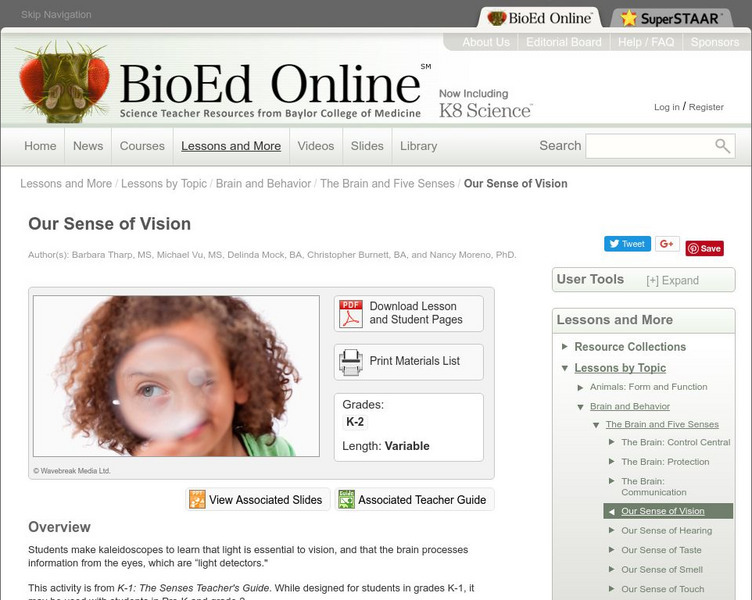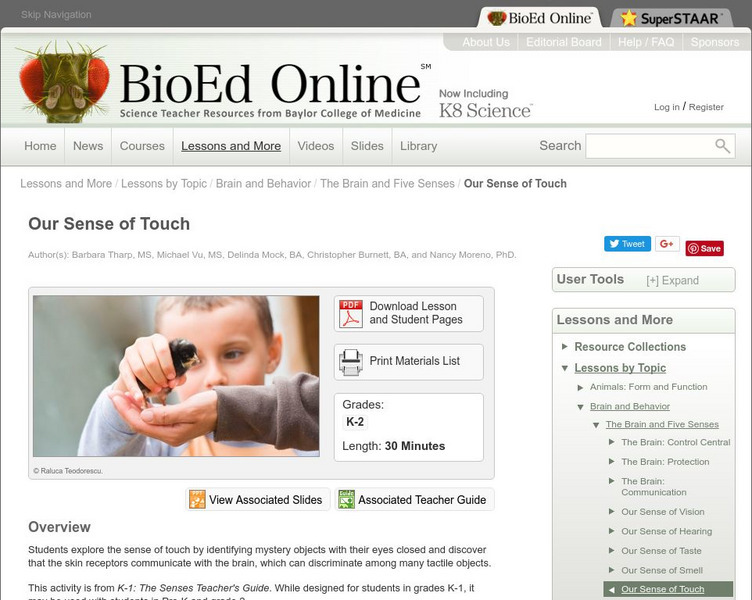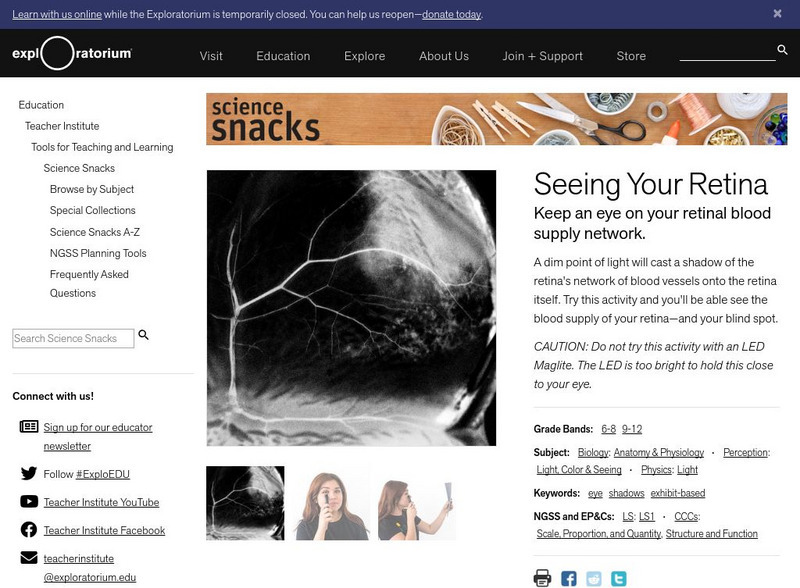TED Talks
Ted: Ted Ed: Eye vs. Camera
Your eyes don't always capture the world exactly as a video camera would. But the eyes are remarkably efficient organs, the result of hundreds of millions of years of coevolution with our brains. The following video and guide outlines...
Curated OER
Kids Health: Eyes
The anatomy of the eye, how it functions to allow us to see, and vision problems that can develop are described.
Other
Lens Shopper: Anatomy of the Eye
Learn about the human body's own "camera" as you explore the inner workings of the human eye. This resource is displayed as a three-dimensional, interactive animation.
Physics Classroom
The Physics Classroom: Refraction and the Ray Model of Light: Anatomy of the Eye
This tutorial looks at the anatomy of the eye and how the sense of sight works. This is the first part of a learning module. Subsequent sections cover how images are formed and detected, the concept of accommodation where the eye adjusts...
Biology Pages
Kimball's Biology Pages: The Human Eye
Written by a former author of Biology textbooks, this page describes not only color vision, but the anatomy of the eye, and color blindness. Easy to understand language.
TED Talks
Ted: Ted Ed: What Are Those Floaty Things in Your Eye?
Sometimes, against a uniform, bright background such as a clear sky or a blank computer screen, you might see things floating across your field of vision. What are these moving objects, and how are you seeing them? This video explains...
BioEd Online
Bio Ed Online: Our Sense of Vision
Which parts of the body are involved in vision (seeing)? Is light important for vision? For this lesson students make kaleidoscopes to learn that light is essential to vision, and that the brain processes information from the eyes, which...
TED Talks
Ted: Ted Ed: How We See Color
There are three types of color receptors in your eye: red, green and blue. But how do we see the amazing kaleidoscope of other colors that make up our world? The following learning module explains how humans can see everything from...
BioEd Online
Bio Ed Online: Our Sense of Touch
How does the sense of touch work? Is the sense of touch more sensitive in some parts of the body, such as fingertips, than in others? In this lesson young scholars explore the sense of touch by identifying mystery objects with their eyes...
Exploratorium
Exploratorium: Science Snacks: Seeing Your Retina
Try this experiment where you examine the blood vessel network of your retina and the eye's blind spot. Includes a safety precaution.
eSchool Today
E School Today: Your Revision Notes on the Five Senses
Learn how the sense organs are structured and how they function to provide you with five senses.
PBS
Pbs: The Clickable Croc
This informative site examines the role of the key parts of the crocodile. It specifically looks at the structure and function of the teeth, feet, tail, nostrils, skin, stomach, eyes, ears, and throat.
York University
York University: How Neurons Talk to Each Other
York University provides a good site on the physiology of nerve transmission. Embedded vocabulary help is available if you need it.
Exploratorium
Exploratorium: Science Snacks: Pupil
Try this experiment to see how light affects the size of your pupils.













